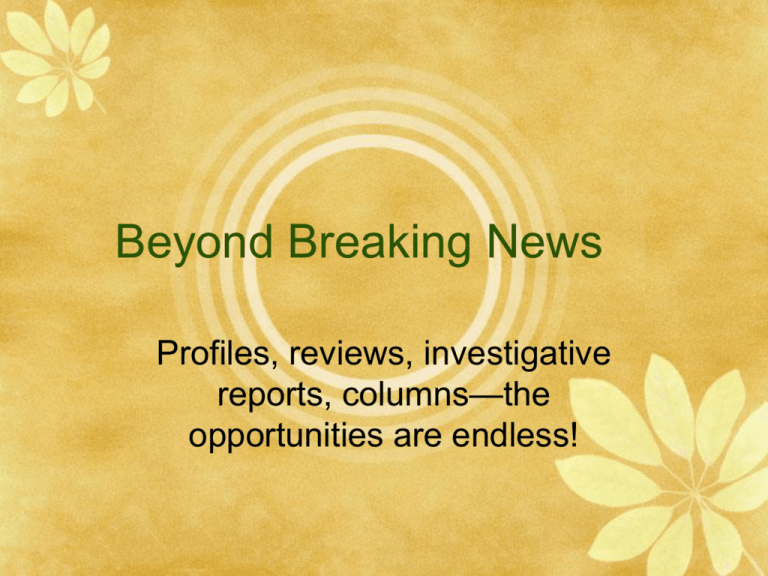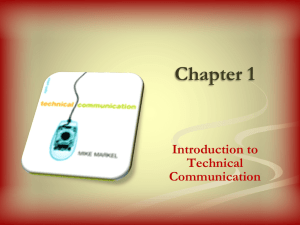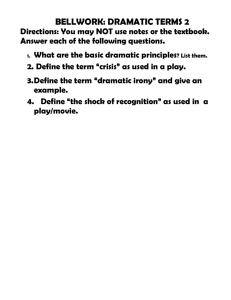Feature Stories
advertisement

Beyond Breaking News Profiles, reviews, investigative reports, columns—the opportunities are endless! The World of Features News stories usually focus on events that are timely and public: government, crime, disasters; they tell you what happened. Feature stories often focus on issues that are less timely, more personal: trends, relationships, entertainment; they offer you advice, explore ideas, make you laugh and cry. Fashion, Food, Fitness and Fun At most publications, features fall into the following categories: Lifestyles: goals, relationships, jobs, fashion, fitness Health: dieting tips, exercise advice, medical news Science and Technology: environmental issues, computers, TVs Entertainment: movies, concerts, art galleries, etc. Food: how to cook it, buy it, bake it, even grow it Homes and gardens: experts tell us how to dig it, weed it, repair, rewire and redecorate “Hard” News, “Soft” News?? Hard News: serious, timely events like murder. War. A fire in a nursing home. Soft News: Lighter, less urgent, less somber topics, like how to buy a puppy. Cookie recipes. Hard and Soft News are relative terms that describe both the topic and treatment of a story. 10 Popular Types of Feature Stories Personality Profile Color Story Backgrounder Trend Story Reaction Piece Flashback How-To Consumer Guide Personality Profile Readers love reading about famous people. Unusual people. Heroic and idiotic people. They want to know how newsmakers think, act and look. A successful profile, then, combines quotes, facts, and descriptions to reveal your subject’s true nature. Color Story “Color,” in this case, means flavor or mood. It’s the type of piece you write when you’re asked to attend an event – a parade, a strike, a funeral, a disaster – and convey the experience by interviewing participants and describing the sights and sounds. Backgrounder Also called an analysis piece. Through research and interviews, you focus on an issue or event in the news, explaining how it happened, why it matters – and what comes next. It’s like teaching a crash course on a complex topic for readers in a hurry. Trend Story This type of feature is often more engaging than a backgrounder on a social problem. Trend stories keep readers plugged in to the people, places, things and ideas affecting today’s culture – the latest/hottest/coolest/oddest – from fads and fashions to lifestyle and entertainment. Reaction Piece When news breaks, or a dramatic issue confronts your community, a reaction story provides a sampling of opinions from experts, victims, even ordinary folks. For controversial topics, it provides a way for key players to tell their side of the story. Flashback Commemorative stories usually run on the anniversary of an historic event – Sept. 11, for example, or the 100th anniversary of City Hall – combining facts, photos and interviews to explain why it was important then, and why it still matters now. How-To This popular, interactive format teachers readers how to do something: Play poker. Buy a house. Invest money. It often works best presented as an easy-to-follow checklist, diagram, or step-by-step sequence of tips. Consumer Guide Readers want to know where to find the tastiest pizza. The hottest jazz. The cheapest shoes. And they expect you (the instant expert) to tell them. Almost everything we do, buy or eat can be rated in a way that advises readers what’s good, bad and ugly. Generating Story Ideas Your publications archives Your competitors TV, magazines, newspapers, Web sites News releases Reader suggestions Brainstorming How to Tell if Your Idea is a Good One Where did your idea come from? Is the idea original? Does the idea surprise you? Does the idea have movement to it? Is there a STORY there? Is there tension? Is the story true? Do YOU like the story? Feature Style Syntax and Phrasing Voice and Tense Detail and Description Other Dramatic Techniques Syntax and Phrasing The rules loosen up when you write feature stories. You can use slang or contradictions; phrase for dramatic effect, even write sentence fragments. Ten seconds. Count it: One. Two. Three. Four. Five. Six. Seven. Eight. Nine. Ten. Ten seconds was roughly how long it lasted. Nobody had a stopwatch, nothing can be proven definitively, but that’s the consensus. The tornado that swooped through Kansas at 6:09 p.m. April 20 took some 10 seconds to do what it did. Ten seconds is barely a flicker. It’s a long, deep breath, it’s no time at all. It’s an eternity. Julia Keller, Chicago Tribune Voice and Tense News stories are written in past tense. But features are often written in present tense, as if you’re right there, witnessing the events, and their happening now: Let’s begin with his pickup truck. It’s green, it runs, its windshield wipers don’t squeak. Those are the nicest things you could say about it. Otherwise, it’s probably noteworthy only for what it contains in the cab, namely a world. Peter Bacho’s world. A quick look-around will give you clues to everything you need to know about the man. Immediately, you might notice his world needs vacuuming. The ashtray overflows with cigarette butts and ashes… Alex Tizon, The Seattle Times Detail and Description Features attain a you-are-there immediacy by carefully detailing people’s actions and appearances, as done below: He’s in the back seat of the family Volvo, headed to school. His mom and dad are talking up front, but he’s not listening. He is still waking up. His light blond hair is uncombed as usual; a micro-pebble of sleep dust clings to the lashes of his right eye. Through headphones, a man is singing into his brain. Other Dramatic Techniques In journalism, everything you write must be true. You can present facts in dramatic ways For instance, hook readers by telling stories chronologically





